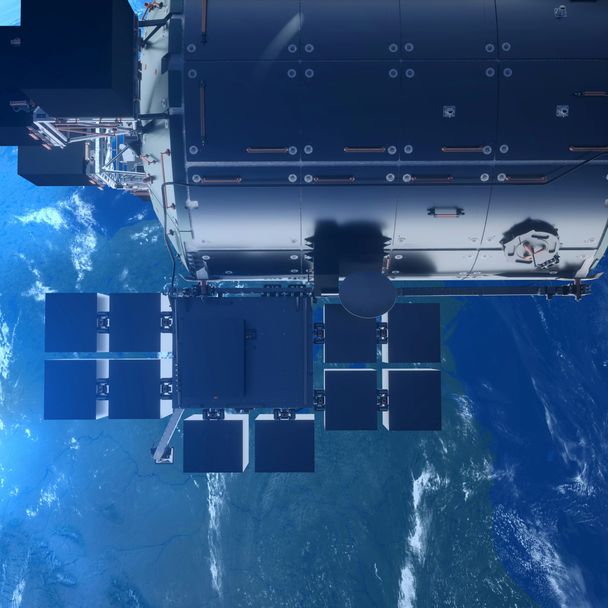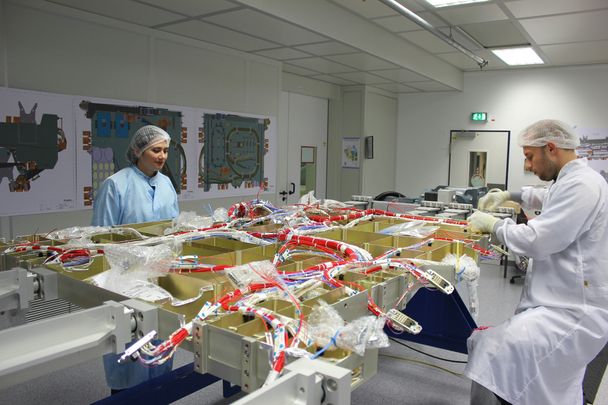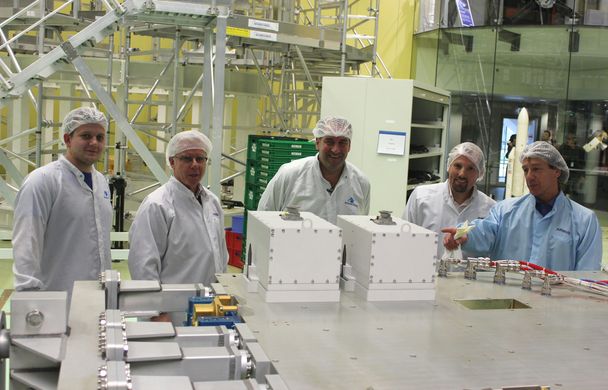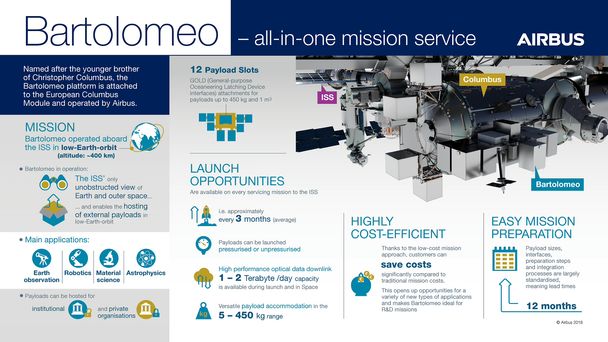Bartolomeo takes shape

The platform for the International Space Station (ISS) is intended to provide new opportunities for research in weightlessness. Now the first hardware is being integrated at Airbus.
Premiere in the clean room of Airbus in Bremen. The first parts of the Bartolomeo research platform have arrived and are now being integrated. In March next year, Bartolomeo will be launched to the ISS and mark a new phase of ISS utilisation. Fast access to the ISS, the provision of high-speed data connections and a unique vantage point are good arguments for new research opportunities in microgravity. The sophisticated design of the new service allows many types of missions at competitive prices. Earth observation and telecommunications, exobiology or space weather research are typical fields of application that can benefit from the platform.

"The complexity of such a project is often underestimated," says project manager Andreas Schütte. In particular, the quality and safety requirements of NASA and ESA for the ISS are enormously high; after all, this is about human space flight. The technical solutions for recording the experiments, power supply and data transmission are also demanding. "More tests are scheduled until the end of the year, when we have to deliver at the beginning of the year so that Bartolomeo can be integrated into a Dragon supply capsule in time for the launch in March," says Andreas, giving an outlook.
Airbus has already signed letters of intent with ESA and UNOOSA for initial payloads.

Airbus' Bartolomeo All-in-one Mission Service will provide point-to-point access for external payloads at the station. It will provide an unobstructed view of the Earth, the ability to directly control the experiments from the ground and the ability to retrieve samples. The payload format is flexible. Users can use a smaller size by sharing the slot with other experiments, or they can book an entire slot of up to 450kg weight.
Bartolomeo is named after Christopher Columbus' younger brother. The platform will be mounted on the outer wall of the Columbus laboratory built by Airbus for ESA.
More about Bartolomeo: https://www.airbus.com/space/space-infrastructures/bartolomeo.html
